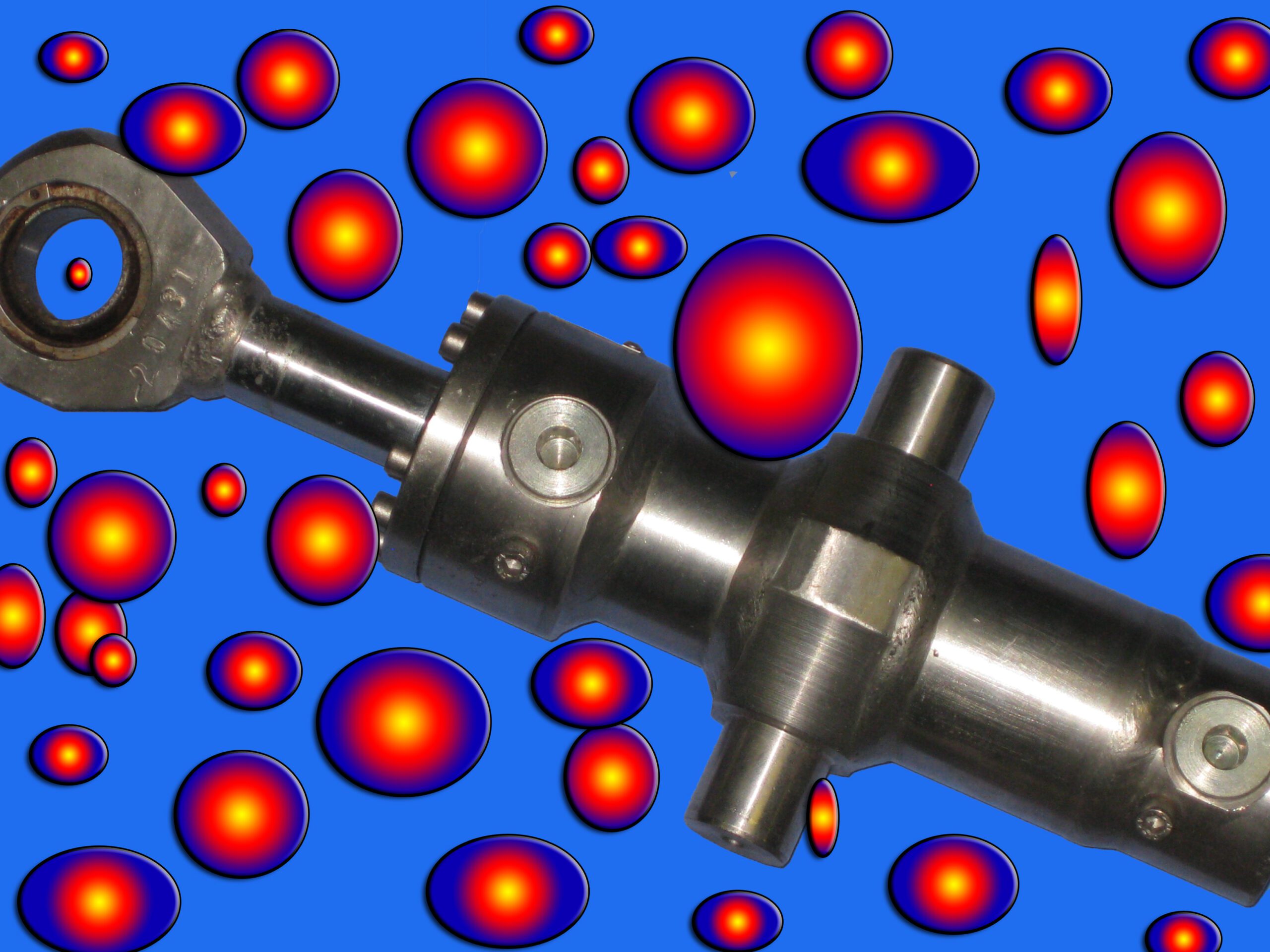In an industrial automation environment, efficiency and reliability is more than just desired, it’s required. From the manufacturer’s line to the home, your pieces are moving and handling life precisely as they were designed to. Conveyors becoming stuck is a common issue with plant equipment. And powering every smooth, precise motion is a powerful actuator system, typically a pneumatic cylinder or a hydraulic cylinder.
Pastime of pneumatic and hydraulic cylinder. For years we have been going back and forth with the choice between whether a system should be made using pneumatic cylinders or hydraulic cylinders. Both are vital to automation and motion control, but they vary in performance, price, and applicability to certain applications. Deciding between the two isn’t always easy, what you go with depends on your business model, the nature of your app, and how much speed, power and cost you want.
So, which one honestly saves time and money for your business? Let’s take a look at both systems in terms of philosophy, advantages and trade-offs to help you make an educated decision.
What Is a Pneumatic Cylinder?
Before the comparison, first let’s know what a pneumatic cylinder is.
A pneumatic cylinder, also known as air cylinder, is a mechanical device which uses the power of compressed gas to produce a force in a reciprocating linear motion. When the pressurized air goes into the cylinder, it forces a piston that is inside of the cylinder to move back and forth in a straight line. This action can be employed to clamp, push, pull or remove objects in an automated manner.
In practical terms, then, what does a pneumatic cylinder do? Consider an automated process line where gears must be pressed together or shuttle rapidly from station to station. A pneumatic cylinder does this rapidly and accurately, but it operates solely on compressed air.
The simple, the clean and the reliable Pneumatic systems are appreciated wherever easy movements, consistency and a safe working environment must be guaranteed. They work by air as a power medium, thus are safe and clean for more applications like the food industry, electronic industry, packaging industry.
What Is a Hydraulic Cylinder?
Now, let’s dissect what exactly is a hydraulic cylinder – the workhorse of large machinery.
While air is the typical pressure medium, hydraulic cylinders work on a pressurized liquid (often oil) to create movement. The concept is simple – liquid that cannot be compressed like air, water (or hydraulic fluid) is pushed in 1 end of the cylinder which moves a piston and creates extreme force in a straight line.
They are used in everything from heavy construction excavators to injection-molding machines. These cylinders can support a very high load, due to their incompressibility, while pneumatic systems cannot.
Basically, if you need brute force and pinpoint accuracy when everything’s on the line, hydraulic cylinders are your technology. And they’re common with hydraulic clamping devices, which afford reliably steady force to hold components in place during machining or welding.
Pneumatic vs Hydraulic Cylinders: What’s the Difference?
At first glance, pneumatic systems and hydraulic systems may look similar, but there are significant differences in how each system operates as well as its applicable uses. The difference between them is how that energy gets created, transmitted and regulated. Here we take a closer look at the differences:
| Feature | Pneumatic Cylinder | Hydraulic Cylinder |
| Medium Used | Compressed Air | Hydraulic Fluid (Oil) |
| Power Output | Moderate Force | Extremely High Force |
| Speed | High speed, quick actuation | Slower but more powerful |
| Precision Control | Moderate | Excellent for controlled motion |
| Cleanliness | Clean and safe for sensitive environments | Requires careful fluid maintenance |
| Cost | Lower installation and maintenance cost | Higher setup cost due to pumps and seals |
| Applications | Light to medium load applications | Heavy-duty operations requiring high torque |
In short, pneumatic systems favor speed and simplicity whereas hydraulic systems favor power and precision.
The Advantages of Pneumatic Cylinders
First, why do so many companies like pneumatic systems in the first place?
- Speed and Responsiveness: The pneumatic cylinder is an ultra-high-speed device for use with such repetitive applications as packaging or sorting. Their rapid response times improve cycle rates, minimizing downtime.
- Clean and Eco-Friendly Operation: Because air is the operating medium, there is no threat of oil leaks or contamination. This makes them quite suitable for clean industries, including pharmaceuticals, food processing and electronics.
- Cost-Effective Setup: Pneumatic systems are simple and cost-effective to install and maintain. They are very simple to build and only need a few parts such as an air compressor, tubing and valves; this contributes to cost reduction for small- and medium-sized industries.
- Simplicity and Reliability: Pneumatics have less moving parts (i.e., easily broken things) on them, so they wear out less. They can operate under severe conditions, tolerating temperature and humidity variations.
- Safety: Pneumatic systems have fewer hazards compared to oil-based hydraulic ones making them safer to use and maintain.
The Advantages of Hydraulic Cylinders
Now it’s time for hydraulics, the muscle-bound jocks of industrial automation.
- High Force Output: When hydraulic cylinders are used it is possible to transmit great forces and even of several tons. Whether they are lifting excavator arms or pressing metal parts, the level of strength they offer is unparalleled.
- Precision and Stability: Hydraulic fluid is incompressible, the 3-chambers displace an equal volume of hydraulic fluid, which evenly strokes the piston. They are great for applications that require precise positioning, like on construction machinery or industrial presses.
- Compact Yet Powerful Design: With a much smaller hydraulic cylinder able to produce the same force as a larger pneumatic one, factory floors can save precious space.
- Durability: In proper maintenance service life: Hydraulic oil system long time and work under greater pressure and higher temperature.
- Integration with Hydraulic Clamping Devices: Hydraulic clamping units are used for many machining and assembly operations to ensure a constant holding power. They stabilize your workpiece and prevent it from moving while it’s being machined, helping to keep cuts consistent and prevent spindle damage.
Pneumatic vs Hydraulic Systems- Make the appropriate selection
When it comes to pneumatic cylinder vs hydraulic cylinder, however, we only ask you to be clear about what you use them for, because according to the sector, load demand and operating environment, one is better than the other. Here are some key considerations:
- If force and precision matter more: Hydraulic cylinders are the better option. They are capable of working under heavier loads and maintain even pressure as studied, these clamps are in high demand in hard industry applications.
- If Maintenance is an Issue: If you’re shocked by the thought of breaking down your air valves, pneumatics is better for ease of maintenance, however, regular servicing means hydraulics deliver longer service life.
- If Space Is Tight: Hydraulic systems can generate more force from smaller parts. Either way, whatever you pick, the key is to pair your system with the way you work in order to get as much out of it as possible.
- If Speed and Clean Operation Are Important: Choose pneumatic systems. They’re faster, lighter and better for rapid, repetitive motion.
Real-World Industrial Applications
Here’s how both platforms stack up across sectors:
- Manufacturing and Assembly Lines: Electronic motion dominates most automated lines, where pneumatic cylinders are used to handle packaging, clamping, pick and place. They move so fast that the production line never stops.
On the other hand, hydraulic machines are used to perform heavy pressing or molding operations requiring tons of force and pressure. Producers of vises use cast iron as their primary manufacturing material. - Automotive Industry: Stamping presses and lifts use hydraulic cylinders and lightweight assembly processes, component transfers etc. are pneumatic controlled.
- Construction and Agriculture: Hydraulic cylinders are used in a variety of applications, from loaders and excavators to cranes and force actuations that need raw power. Pneumatics are primarily used on auxiliary systems such as door operation and tool handling.
- Food Processing and Electronics: Pneumatics has the edge here due to its clean, dry air operation. 0 No contamination risk Easy to clean Ideal for precision packaging or micro- assembly.
Cost Analysis: Which System Is Cheaper?
On the initial investment front, pneumatic systems decisively pull ahead, they’re less expensive to install and maintain. Air compressors are also cheaper than hydraulic pumps, and it costs less to fix a leak.
But if you need a solution for frequent or long-term applications you may find hydraulic cylinders are more economical in the long run for high-force needs. Strong, controlled movement can be delivered with precise amounts of power, allowing for fewer machines to accomplish the same work despite their cost at the start.
What you get is a trade-off between speed and power, simplicity and precision, short-term savings and long-term success. It depends on what’s most important to you.
Challenges in Each System
Although both technologies are well-proven and reliable, they do pose problems.
Pneumatic Challenges:
- Lower speed control because of the compressibility of air.
- Loss of efficiency if leaks aren’t detected.
- Compressed air can also be moisture laden and unfiltered right compressed air will cause corrosion.
Hydraulic Challenges:
- It is at risk of oil spill and pollution.
- Seals and fluid levels need to be maintained periodically.
- Otherwise, the noise in the larger systems is higher and energy costs increase.
Most of these concerns can be addressed effectively with routine maintenance, correct filtration and trained personnel.
The Future of Actuation Technology
The technology of both pneumatic and hydraulic is moving very fast. Traditional actuation is growing into intelligent automation, thanks to smart sensors, IoT systems and energy-efficient designs.
With the industrial world awakening to better monitoring and feedback systems, even hydraulic clamping devices, as well as cylinders, have been developed with electronic feedback for immediate scares lope, and modern pneumatic cylinders are being designed to be quieter and consume less energy.
As more and more industries transition to sustainable automation, hybrid systems could soon become the norm, a combination of the strengths of both air and fluid power.
Conclusion
When it comes to pneumatics cylinder vs hydraulic cylinder, there is no clear winner – only the best choice for your specific application.
When your business depends on quick, efficient and clean operations, a pneumatic cylinder system is the wise investment. On the other hand, if you require tons of force, extreme precision and guaranteed service over the long haul – hydraulic cylinders and hydraulic clamping devices are for you. Both of them are very important in industrial automation. Deciding wisely also means swerving your business out of the ditch and positioning it for future growth.
But it won’t take long before your actuators prove to be the muscle behind your operation whether you’re lifting heavy machinery or assembling fragile electronics, and the right actuator can turn efficiency into profit.





























